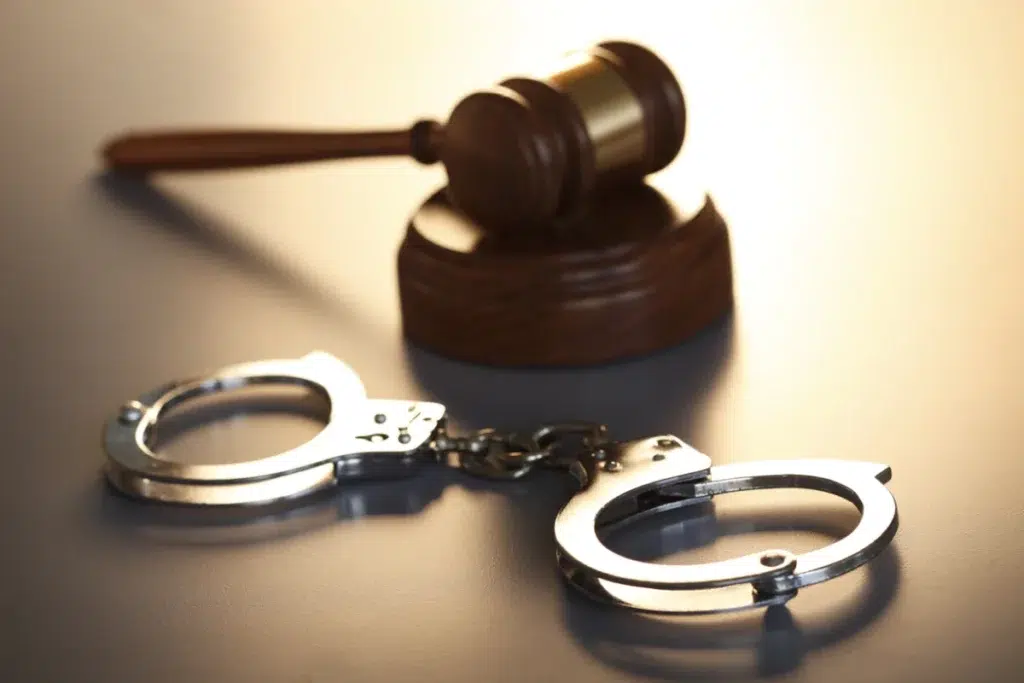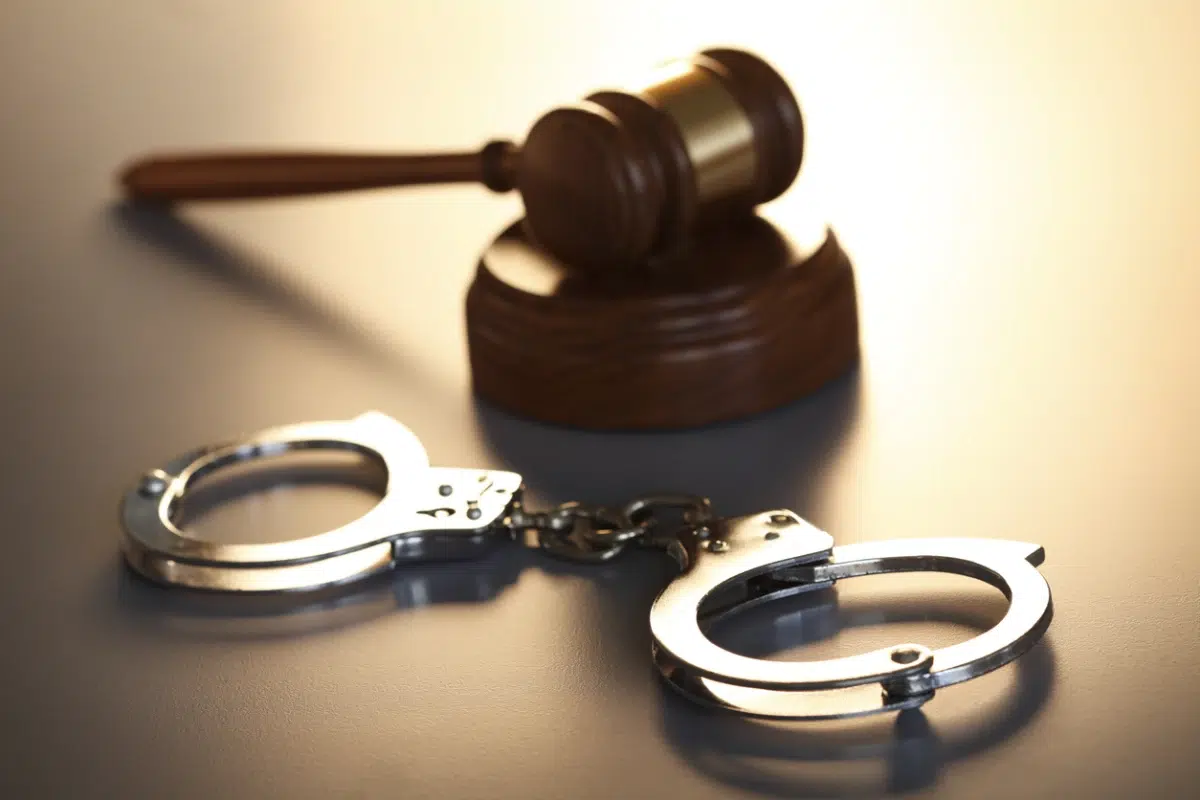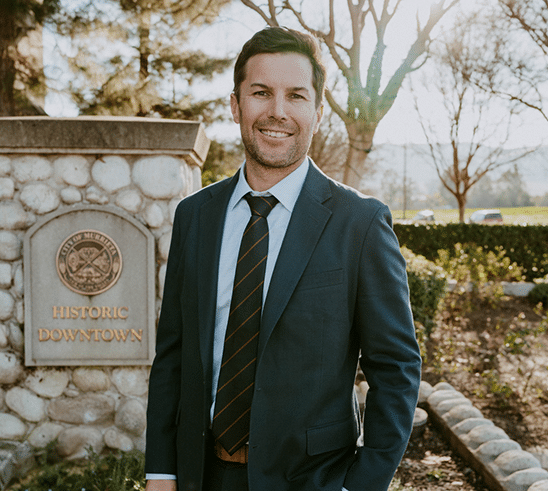Share

A felony record and felony conviction can significantly impact nearly every aspect of life. Employment, housing, voting rights, and even travel can become more difficult with a felony conviction. California law, however, provides certain opportunities for reducing a felony conviction to a misdemeanor.
At Gressley & Donaldson, we assist clients in pursuing post-conviction remedies to reduce felony convictions and expunge felony charges, depending on the client’s specific circumstances. In this article, we explain when a reduction from a felony charge may be possible, the legal tools that make it happen, and how the right defense can protect your future. Reducing a felony to a misdemeanor can open the door to many new opportunities.
What Does It Mean to Reduce a Felony to a Misdemeanor?
Felony reduction is an order that reduces certain types of charges from a felony to a misdemeanor, thereby altering the status from felony to misdemeanor. The types of offenses that may be reduced to misdemeanors are commonly known as “wobbler” offenses, which means the offenses can be felonies or misdemeanors. Having a felony conviction reduced to a misdemeanor is a court order that reclassifies the offense under California law. Under the penal code, once a conviction is reduced from a felony to a misdemeanor, it is a misdemeanor for all purposes.
This differs from expungement under the Penal Code, which is typically sought under Penal Code sections 1203.4, et seq, which allows for dismissal after completing probation and other terms. A reduction changes the class of the conviction. An expungement involves clearing the record for most private background checks, allowing you to state that you were not convicted in many settings.
The shift from felony to misdemeanor can impact job opportunities, state licensing requirements, jury service eligibility, and firearm rights under state law. Some limits can still exist under federal law, and sex offender registration and strike status do not vanish with a reduction. Next, let’s look at the main legal tool most people use for this relief.
Who Is Eligible for Felony Reduction in California?
Not every felony conviction can be reduced to a misdemeanor. Felony to a misdemeanor reductions to only felonies in certain categories of offenses, and closely examines your sentence history under the following circumstances. Understanding eligibility, especially since not all felonies can be reduced, upfront, helps set realistic expectations before you invest time and resources in the process.
Key factors include:
- Type of offense: Only “wobblers” (offenses that can be charged as either a felony or a misdemeanor) are eligible for reduction under Penal Code 17(b). Straight felonies such as robbery, rape, or residential burglary do not qualify unless later reclassified by ballot measures like Proposition 47 or Proposition 64.
- Sentence served: If you served time in state prison, you are generally not eligible for 17(b) relief. Cases handled through county jails under California’s Realignment law (AB 109) may have different outcomes, but felony-to-misdemeanor relief is limited.
- Probation status: Completing probation successfully, with fines and restitution paid, strengthens your chances. Pending violations or unpaid restitution can block eligibility.
- Criminal history: Judges may deny a reduction if your prior record or the seriousness of the offense suggests ongoing risk to public safety.
- Other statutory limits: Certain offenses, such as serious or violent felonies under California’s “Three Strikes” law, remain ineligible for reduction.
Because eligibility rules depend heavily on your record and the statute you were convicted under, an attorney can review your specific conviction to confirm whether a reduction is possible or if another form of relief, such as expungement, is a better fit.
Key Legal Tools for Felony Reduction
California Penal Code section 17(b) is the classic path to reduce a felony to a misdemeanor, especially for those who were granted probation in certain criminal cases. It applies to “wobblers,” meaning crimes that can be punished as either a felony or a misdemeanor. Unlike a straight felony, straight felonies like grand theft, most sex crimes, robbery, or residential burglary are not eligible under 17(b) unless later laws reclassify them.
A Penal Code section 17(b) request can be made at preliminary hearing, at sentencing, after serving felony probation, or even years later if all terms are satisfied. Judges look at the facts of the case, the defendant’s social history, compliance with probation, the recommendations of a probation officer, and public safety. Serving a state prison sentence means the court denied probation, and generally, a reduction to a misdemeanor under Penal Code 17(b) is not available. However, a local county jail prison sentence under realignment on a wobbler offense is eligible for a misdemeanor reduction under California Penal Code 17(b).
To put your best foot forward, it helps to demonstrate to the court and district attorney that you have successfully completed felony probation on the wobbler offense, and that the reduction to a misdemeanor is in the interests of justice.
- Probation completed with no violations or any violations addressed and resolved.
- All fines, fees, and restitution have been paid, with receipts on hand.
- Proof of steady work or school, volunteer efforts, and counseling where needed.
- Character letters from employers, mentors, faith leaders, or coaches.
Other laws can also be beneficial in some instances. Proposition 47 reclassified certain low-level criminal offenses, including drug and theft cases, to misdemeanors through resentencing under PC 1170.18. Proposition 64 changed many marijuana offenses. Your case history will guide which route is suitable for misdemeanor convictions.
Common California Paths From Felony Toward Misdemeanor Crimes
| Pathway | Main Statute | When It Is Used | Notes |
| 17(b) reduction | PC 17(b) | At preliminary hearing, sentencing, post-conviction | Only for wobblers. Prison sentences block eligibility. |
| Prop 47 resentencing | PC 1170.18 | Post-conviction | Applies to certain low-level theft and drug cases from 2014 forward. |
| Mental health diversion | PC 1001.36 | Pretrial | Completion can lead to dismissal and no conviction. |
| Drug diversion | PC 1000 | Pretrial | For qualifying drug possession cases. Completion can lead to dismissal. |
| Plea to misdemeanor | N/A | Any time before the trial ends | Plea deals can result in a felony being reduced to a misdemeanor. |
With those tools in mind, many people ask if they can avoid a conviction in the first place. That is where diversion programs come in.
How Diversion Programs Can Lead to a Misdemeanor
California offers pretrial diversion that can end a case without a conviction when you complete treatment or classes. Mental health diversion under PC 1001.36 can pause the case for care if a qualifying condition significantly contributed to the conduct in question. Drug diversion under PC 1000 can also apply to certain possession cases.
Courts look for a clear fit and a plan that protects the community. Prosecutors can support or oppose, and the judge makes the final call. If you complete the program, the case will be dismissed, and your record will appear significantly different.
- PC 1001.36, mental health diversion, needs a diagnosable condition, a link to the charged conduct, treatment suitability, consent, and no unreasonable risk to public safety.
- PC 1000, drug diversion, focuses on simple possession, no violence, and no past disqualifying history.
When diversion is not available, negotiating with a criminal defense attorney can help reduce a felony charge to a misdemeanor or mitigate the severity of the sentence. That leads us to plea bargaining.
Role of Plea Bargains in Reducing Charges
A plea bargain is an agreement in which you admit guilt to a lesser charge, often a misdemeanor, and the district attorney drops the felony charge. These talks can begin early, sometimes at arraignment, and can continue all the way up to trial.
Knowing the likely sentence up front helps you weigh the risks associated with your criminal conviction. In the right case, you may plead guilty, and a plea can skip the felony route completely or remove added time from enhancements.
Plea terms can include or cut sentence boosts, such as great bodily injury or gun use, when the facts and equities support it. Timing matters, and a well-timed offer with solid mitigation materials can open the door to reducing jail time. Judges must approve the agreement in court.
Even with a strong plea plan, judges still use their own views on sentencing. The next section shows how that works in real courtrooms.
Judicial Discretion and Sentencing Philosophy
Relief under PC 17(b) is discretionary. Judges weigh the seriousness of the conduct, the defendant’s history, including their performance in granting probation, and the safety of the community. They look at whether the court grants probation, whether you took responsibility during probation, and what you have done since.
Local practice matters too. Some courts expect a packet with letters, proof of work or school, and certificates. Others focus on probation reports and the case file. Knowing the courtroom’s habits can expedite the process.
Community involvement, remorse, and clean conduct after the case can tip the scales. Elections and local crime trends can also influence how courts approach reductions, even if nobody explicitly states it.
Why does all this matter to you beyond the case? The answer is simple. A reduction of a conviction to a misdemeanor can open doors that feel closed, restoring many civil rights.
Broader Implications for Future Opportunities
Moving a conviction to misdemeanor status can restore the right to serve on a state jury, unlock volunteer roles, and lower barriers to employment with many employers, including the restoration of gun rights. Some licensing boards in healthcare, real estate, trades, and for professional licenses give more leeway to applicants with misdemeanor histories.
Travel can get easier, too. While every country sets its own rules, a misdemeanor tends to raise fewer questions than a felony at consulates or borders, which can positively impact your immigration status. Immigration issues are distinct and require separate guidance from an immigration lawyer.
Online databases can still display the original filing until the records are updated. Ask about updating your DOJ record, checking your rap sheet, and utilizing expungement under PC 1203.4 if you qualify. If a background site lists old or wrong data, you can send them the court order and request a correction.
With the stakes this high, getting the plan right from the start really matters. Here is how we approach that part.
Consequences of a Felony Conviction on Criminal Record
A felony offense on a person’s criminal record means a person can be viewed as a convicted felon. This can pose problems with seeking a professional license, gun rights, and employment. Reducing felonies can restore certain civil rights when the court declares certain felonies to be misdemeanors. With a felony reduced under California Penal Code 17(b), a criminal defense attorney can explain that reducing felonies can turn felonies into misdemeanors and improve a defendant’s criminal history. This is not generally available to people who were sentenced to a judgment imposing state prison. State prison is different than county jail, and the federal government may not recognize the reduction of the conviction to a misdemeanor.
Considerations and Attorney Guidance
Timing, eligibility, and filings all affect the outcome. Failing to cite a statute or filing in the incorrect court can delay proceedings or prevent relief. A clean, well-supported motion gives the judge something to say yes to.
Working with a criminal defense attorney who handles felony offenses and felony reductions can be beneficial for record pulls, drafting motions, and courtroom presentations. At our firm, we understand what local judges expect, and we prepare you for the questions that often arise.
Going alone or using generic forms can lead to weak results. We also review whether reduction is the best next step or if a different remedy better fits your goals, such as expungement under Section 1203.4, Proposition 47 resentencing, or early termination of probation.
If you’d like a no-pressure review of your options, we are ready to listen. When you are ready, we will create a plan that suits your life and timeline.
Act Quickly to Protect Your Future
Facing a felony does not mean you are out of options. At Gressley & Donaldson, we thoroughly examine the facts for individuals convicted, challenge weak evidence, and pursue every opportunity to reduce felonies to misdemeanors. Our team is committed to providing clear guidance and strong advocacy for people convicted at every stage of their case.
Call 951-319-3199 or visit our Contact Us page to schedule a consultation. Early legal intervention can make a critical difference in the outcome.



